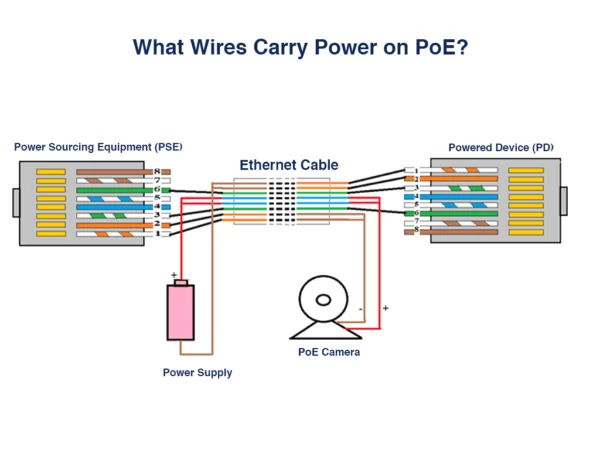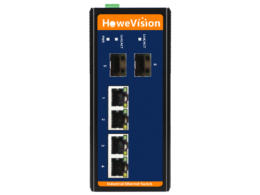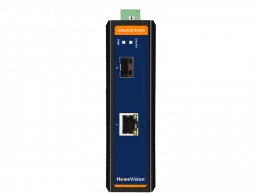I have been explaining the definition of PoE in almost all my posts. The reason is simple: I don’t want new readers to be left with doubts.
Power over Ethernet, or PoE, is a technology that helps us send data and electrical power over a copper wire. You will find a specific arrangement to source the power in PoE networks.
The data line can source power at either the PoE injector or the network switch. Many users think both are the same, but there are significant differences between them.
So, things have been pretty clear until now. Besides, we often use CATx network cables to transfer power to our PoE-enabled devices.
Yet, you might come up with a question – what wires carry power in PoE? Don’t worry! I will clarify this question in this post.
What Is PoE and How Does This Technology Work?
PoE, which uses ethernet cables, helps us carry electrical power and data to PoE-enabled devices.
As a result, PoE can save you money on buying extra wires and electrical devices and time on installation.
Thus, PoE is a much more flexible technology, mainly for remote applications. These and many other benefits drive an apparent rise in PoE’s demand.
Now, let’s discuss how this unique technology works. It’s pretty simple to understand.
You will need an Ethernet cable that satisfies the CATx standards. This cable usually consists of four twisted pairs. PoE uses these pairs to transfer power to PoE-enabled devices.
In the past, the workings of PoE were quite complicated. The PoE standards employed two pairs to transfer data out of the four pairs. Likewise, the remaining two pairs transmitted electrical power.
However, there have been many advancements in PoE standards. Modern PoE standards allow data and power over all pairs.
You might wonder what difference this change could make to PoE’s functionality. Well, it makes a notable difference.
The chances of interference can increase when you use separate pairs to transfer data and power.
Remember, data and power transmission occur at different frequency ranges. Thus, using the same twisted pair to carry both would eliminate interference issues.
So, Which Wires Carry the Electrical Power in PoE?
An ordinary Ethernet cable consists of eight wires, i.e., four pairs. Thus, PoE can use either of the two ways to carry DC power on the connected Ethernet cable.
The power transmits through the wire pairs that perform data transmission in the first mode. In most cases, pair 2 and pair 3 implement this function.
Now, let’s discuss the second mode. Here, power transfers through the unused pairs. Special switches are needed to transmit the electrical power on the Ethernet cable.
What if you don’t have access to such a switch? No worries; one can also insert a powering device into the line.
This powering device/switch is nothing but the Power Sourcing equipment (PSE). The PSE will determine which of these two modes to use.
If your equipment already has power, we will call it a Powered Device (PD). This device can handle both modes of transmitting power on the Ethernet cable.
How to Choose the Right Cable for PoE?
Picking a suitable Ethernet cable is essential to ensuring network reliability and quality. Yet many factors can help you choose the right cable type for PoE applications.
In this part, I will explain a few factors to consider when buying PoE network cables.
Cable Structure
As you know, the cable structure is vital in any cable. This factor can cause the temperature to rise in a line.
Copper cables are most often divided into two types: STP (shielded twisted pair cable) and UTP (unshielded twisted pair cable).
Remember, cables with foil or metallic shields can dissipate more heat than UTP cables. Higher heat dissipation can result in a cooler cabler.
Let’s take the example of the Cat6 cable. The Cat6 F/UTP model will dissipate 40% more heat than the Cat6 UTP. Likewise, the Cat7 S/FTP cable, each pair covered with a foil shield, can disperse more heat than Cat6 F/UTP.
As you can see, cable structure is an essential factor you should consider.
Conductor Size
In PoE applications, the conductor resistance can lead to heat formation in the cable. Usually, Cat6 and Cat7 cables can have more extensive conductor sizes than Cat5e patch cables.
A larger conductor size means that the cable can lessen conductor resistance. Simply put, the heat produced in the line can reduce in the same proportion as the conductor resistance decreases.
Thus, make sure you get the cable with a larger conductor size. It will ensure that the line becomes less hot. At the same time, it will perform better with PoE applications.
Cable Materials
Do you ever look at the cable materials? PoE network cables should be made of high-quality materials.
You will see pure copper cables and copper-clad aluminum cables. Most people with budget concerns tend to select copper-clad aluminum cables. However, such lines can show network issues in the long run.
Of course, inferior materials can affect data quality and power transmission. Thus, make sure you prefer pure copper cables. They might cost more, but they will be worth buying if we consider their performance.
Power Consumption
We cannot ignore the power requirements of PoE devices. That’s why I make it a point when choosing PoE cables.
The power requirements can describe two more factors. First, they disclose which IEEE standard to look for in a cable and help you choose the cable category.
Data Transmission
One should also think about the data transmission requirements. For example, do you need 10GBASE-T or a simple 1000BASE-T?
Let me simplify the data transmission factor. Suppose you want to manage high-end devices, like megapixel IP cameras. Then, you may need to choose high-grade PoE cables. It will help you transmit the required power and a high-quality video signal.
-
 Industrial Gigabit Managed Ethernet Switch, 8-Ports 10/100/1000Base-TX RJ45
Industrial Gigabit Managed Ethernet Switch, 8-Ports 10/100/1000Base-TX RJ45 -
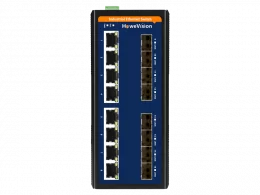 Industrial Gigabit Managed Ethernet Switch, 8-Ports 10/100/1000Base-TX RJ45, 8 Ports 100/1000Base-FX Fast SFP Uplink
Industrial Gigabit Managed Ethernet Switch, 8-Ports 10/100/1000Base-TX RJ45, 8 Ports 100/1000Base-FX Fast SFP Uplink -
 Industrial Gigabit Managed Ethernet Switch, 8-Ports 10/100/1000Base-TX RJ45, 4 Ports 100/1000Base-FX Fast SFP Uplink
Industrial Gigabit Managed Ethernet Switch, 8-Ports 10/100/1000Base-TX RJ45, 4 Ports 100/1000Base-FX Fast SFP Uplink -
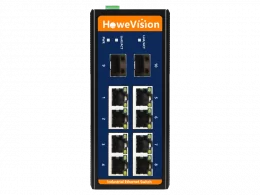 Industrial Gigabit Managed Ethernet Switch, 8-Ports 10/100/1000Base-TX RJ45, 2 Ports 100/1000Base-FX Fast SFP Uplink
Industrial Gigabit Managed Ethernet Switch, 8-Ports 10/100/1000Base-TX RJ45, 2 Ports 100/1000Base-FX Fast SFP Uplink
Final Thoughts!
After analyzing the above factors, it seems that you now understand what wires carry power on PoE. In short, you need high-quality PoE cables.
Moreover, you will also need a primary PoE switch for home use, such as a 14-ports PoE switch. But, if you are setting up a network for an organization, you may choose another PoE switch with more ports. In this case, you can go for a 24-ports PoE switch. You can read “What Type of PoE Switch Should I Buy?” for more information.
This way, one can set up a reliable network on the desired premises.

